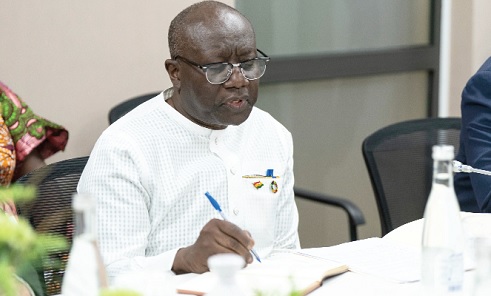Financial Stability Fund to offer solvency support to financial institutions via “GoG recapitalisation bonds” on commercial terms – Finance Ministry
In the case of insurance companies, their eligibility will be in line with the Insurance Industry Strengthening Strategy (ISS).
Financial Stability Fund to offer solvency support to financial institutions via “GoG recapitalisation bonds” on commercial terms – Finance Ministry
Per the Ghana Financial Stability Fund (GFSF) Operational Framework, the Finance Ministry notes that, the Government of Ghana (GoG) will prioritize the use of Solvency Fund A2 to recapitalize viable banks in which GoG already has equity either directly or through Ghana Amalgamated Trust Plc (GAT) as well as other financial institutions owned by GoG or indigenously controlled.
The GoG notes that it is open to extending access to Solvency Fund A2 to indigenously controlled banks, SDIs, insurance companies and SEC-licensed firms that are determined by their regulators to be viable but are not eligible to access Solvency Fund A1 and whose shareholders are willing to recapitalize them to an extent based on a specified ratio.
For state-owned financial institutions, there will be direct investment from Government. With privately owned institutions, there will be an indirect investment through the Ghana Amalgamated Trust (GAT). This is to minimize any direct GoG involvement and ownership in any of these institutions.
Funding from Solvency Fund A2, the Finance Ministry notes, will be in the form of GoG Recapitalization bonds to be issued to eligible FIs and/ or direct cash disbursements by GoG to such FIs, in a combination to be agreed on a case-by-case basis in conjunction with relevant sector regulators.
Beneficiary financial institutions (FIs) will in turn issue Common Equity Tier 1 capital instruments (ordinary shares) and/or Tier 2 capital instruments to be held by GoG directly (in the case of all state-interest institutions) or to be held by GAT in trust for GoG (in the case of privately owned institutions).
GoG/GAT will exercise rights attached to equity shares and Tier 2 instruments issued in their favor and will monitor the governance and performance of beneficiary banks/SDIs through mutually accepted Shareholder Agreements (SHA) and/or Share Subscription Agreements (SSA).
The GoG recapitalization bonds, the Finance Ministry further notes, will be structured to meet the regulatory capital requirements of relevant sector regulators and will not expose eligible FIs to further significant valuation losses.
As FIs seek to manage their delicate liquidity positions prudently, and work towards reducing their sovereign exposures over the medium-to-long-term to avoid further impairment losses by external auditors and generally to improve the resilience of their balance sheets, design features of recapitalization bonds will consider market dynamics to promote marketability (yield, tenor, tradability) for secondary market trading purposes.
Consequently, recapitalization bonds will be issued as a tap-in from the medium to long-term dated GoG exchange bonds issued in February 2023.
According to Government, the design of the GFSF, including its target size, duration, sources of funding, access conditions, and governance arrangements, will help to avoid moral hazard and provide incentives for orderly unwinding and market-based solutions in the long-term.
Funding for the solvency support will be structured on commercial terms as would be offered to a private investor, and shall not be bailouts.
In some instances, concessionary commercial rates may be considered with improved governance structures.
Key eligibility criteria for financial institutions (FIs) accessing the Solvency Fund A2 include:
a. full participation in the DDEP,
b. a viable capital restoration plan notwithstanding the GoG debt restructuring impact and discounting regulatory forbearance and other reliefs, and
c. a commitment from shareholders to inject additional capital to complement GoG’s funding (in a ratio of 1 to 1) to ensure that the dilution of private shareholders is kept to a minimum.
d. Evidence of strong governance and prudent management, (for example, FIs must achieve a minimum of 75% implementation rate of most recent on-site regulatory examination prescriptions, and
e. full compliance with regulatory directives (Corporate Governance Directives, Guidelines, Cyber Security Directives, and Risk Management Directives).
f. In the case of insurance companies, their eligibility will be in line with the Insurance Industry Strengthening Strategy (ISS).
The GFSF is being operationalized through two windows: a Solvency window (Fund A) and a Liquidity window (Fund B).
The Solvency window (Fund A) is expected to provide recapitalization support to financial institutions whose solvency is adversely impacted by the DDEP and to help restore them to full compliance with minimum regulatory capital requirements in the shortest possible time and no later than the end of the ECF programme.
This window will be designed as two distinct but complementary sub-funds (Fund A1 and Fund A2) under the GFSF, reflecting financing support from the World Bank/IDA (Fund A1) and from GoG directly (Fund A2).
In all, some $750m has been set aside for the operationalisation of the GFSF aimed at mitigating the impact of the GoG debt operation on the financial sector.
Related Posts
Source:norvanreports


